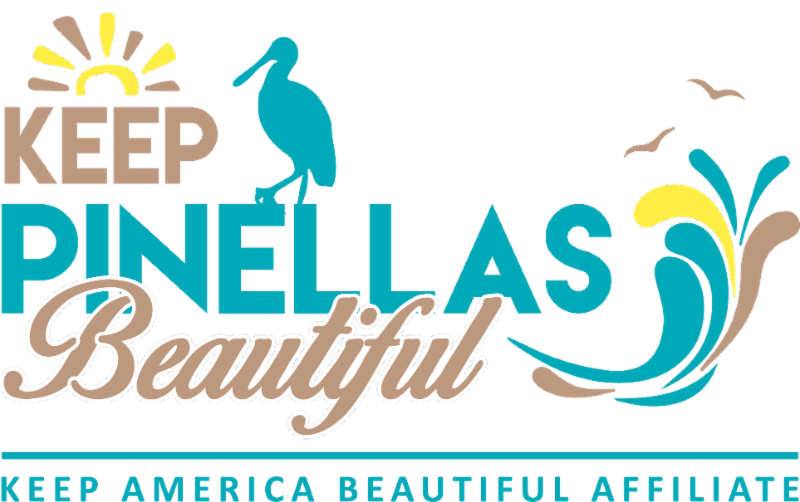Education Corner: Sea Turtle Nesting Season
Sea turtle nesting season starts May 1st and continues through October 31st. In this edition of Education Corner, I will be providing some information about sea turtles and three activities for kids focused on sea turtle conservation.
In Pinellas County, we commonly see Loggerheads, Green Sea Turtles, and Kemp's ridleys. Although all three of these species use Pinellas County beaches as their nesting grounds, loggerhead turtles make up about 99% of the nests we see here. Loggerhead sea turtles get their name due to their large heads with powerful jaws used to eat crustaceans, whelks, and conchs. Female loggerheads are observed coming onto Pinellas County beaches at night to lay their eggs. Each nest will contain about 80 to 100 eggs.
Due to predators, natural disasters, and human-related impacts, only about 1 in 1,000 sea turtle hatchlings make it to adulthood. Unfortunately, female sea turtles and hatchlings face many obstacles on the beach including:
Artificial lighting from homes, hotels, restaurants, streets, flashlights, and even cameras on cell phones can cause them to become disoriented (get confused and go the wrong direction putting them in great danger). Female sea turtles and hatchlings use natural lights (moon and stars) to help navigate to/from the ocean.
Obstacles on the beach such as sand castles, beach chairs and tents, litter, and even holes dug in the sand by tourists and residents. These obstacles can lead to female sea turtles and hatchlings getting trapped or tangled.
To learn more about sea turtle conservation in Pinellas County, please check out this resource.
Activity for Toddlers and Preschool Kids:
Goal: discuss the anatomy of a sea turtle and talk about things that could be an obstacle for a sea turtle.
Supplies:
Paper plate
Paint
Construction paper
Paintbrush
Markers or crayons
Pieces of trash or paper
Plastic Bag
Rocks
Sand
Directions:
Have your child use a paper plate to decorate the shell of a sea turtle with paint, markers, crayons, and construction paper.
Put various obstacles on the table and explain the barriers that a sea turtle may face.
Questions to ask your child:
What does a sea turtle eat?
What should we do when we leave the beach?
Point to the sea turtle’s head. Point to your head.
Point to the sea turtle’s eyes. Point to your eyes.
Point to the sea turtle’s mouth. Point to your mouth
Activity for Elementary Kids:
Goal: Discuss ways that plastic enters our waterways and impacts sea turtles.
Supplies:
5 latex balloons
10 plastic pieces the size of a quarter
5 pieces of string to represent fishing line
Large container
Goldfish to represent fish and marine life in the ocean
Grass to represent seagrass
Directions:
Put all the items inside the container and discuss what these items represent (items found in the ocean).
Start to stir the items in the container and talk about how sea turtles can easily confuse items for food.
Questions to ask your child:
How might plastic affect sea turtles?
What are some hazards that can impact sea turtles?
What should you do if you see an injured animal?
What are some ways to help sea turtles?
Activity for Middle School Kids:
Goal: Create your own board game to show the challenges a sea turtle may face on the beach.
Supplies:
Construction paper
Ruler
Dice
Index cards
Buttons or marbles
Markers, crayons, or paint
Directions:
Create a board game that shows the barriers a female sea turtle faces on the way to lay her eggs on the beach and any obstacles a sea turtle hatchling may face making the way out into the ocean.
Conduct some additional research online and create trivia cards about sea turtle anatomy and conservation.
Suggestion: You can roll the dice to determine what happens to your sea turtle.
Numbers 1, 2, and 3 are obstacles a sea turtle faces (red tide, hurricanes, sand castles, artificial lighting, plastic debris, fishing line, etc).
Numbers 4, 5, and 6 are positive actions that humans do to help sea turtle populations (beach cleanups, reusable straws, turning off lights on the beach, knocking down sand castles, bringing your own reusable bag to the grocery store, etc).
Optional: If you would prefer to use a template here is a great resource https://www.storyboardthat.com/storyboards/poster-templates/game-poster-2/copy
Questions to ask your child:
At the end of the game, did your sea turtle experience more obstacles or positive actions done by humans?
What is the biggest takeaway message from your game?
What are some natural hazards that impact sea turtle populations?
a. Hurricanes, erosion, storms, etc.
What are some human hazards that impact sea turtle populations?
a. Litter, oil spills, artificial lights, sand castles, etc.
What do I do if I see an injured sea turtle:
If you see an injured sea turtle: DO NOT TOUCH THE SEA TURTLES (this includes hatchlings). Only trained marine rescue professionals should handle them. If you see a turtle in distress, call the following numbers and do not touch the sea turtle.
Florida Fish and Wildlife Conservation Commission (FWC)- Florida Sea Turtle Stranding and Salvage Network: (888) 404- FWCC (888-404-3922).
Clearwater Marine Aquarium- Stranding Line (727) 441-1790 x 1

